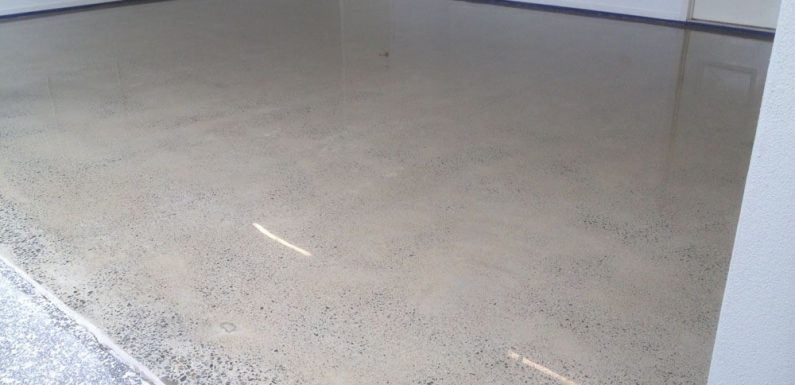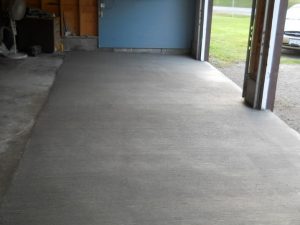
If you are thinking of laying a concrete floor in your garage, here are some tips:
Do Your Research
It always makes sense to understand as much as possible about your proposed home remodeling project, whether you plan to do it yourself or pay someone else to do the job. When looking for a contractor, you should be able to ask good questions and recognize when you receive an answer that does not add up.
There is no excuse for bad concrete. Developing cracks are probably the biggest headache, and you might have heard people say that “always concrete will crack.” Do not believe it. Good concrete in the garage should easily be able to bear all the weight you want to throw at it, through heat and cold, and during many years with little, if any evidence of cracking.

Ground Preparation
The greatest threat to concrete in the garage is not derived from what will be built or parked on top of it, but what occurs below. If the soil under the slab shifts, the result could be a cracked slab.
Good soil preparation begins by removing the top layer of soil. Then, if the soil has not previously been “disturbed”, a minimum 4 inch layer of stone or gravel must be added. The gravel or stone also needs to be compacted. For all your Concrete Cheltenham needs, visit a site like https://www.monstermixconcrete.co.uk/
Barriers
Vapour barriers (essentially, a thick sheet of plastic) are often not required, but you really should insist on one. This is insurance against water moving up through the porous concrete, condensation on the surface. Vapour barriers made especially for use under concrete are the best choice.
Expansion joints
It is common knowledge that timber shrinks as well as expands as humidity levels and temperature fluctuate throughout the year. Exactly the same process happens with concrete. That is why it is necessary to incorporate expansion joints to run along the sides of the concrete garage floor and around posts or other objects that rise up through the slab. Tough materials used in expansion joints absorb any expansion, thereby reducing stress.

Finishing and Curing
Once the concrete has been poured, it should be leveled and smoothed. Expansion grooves should be cut into wet concrete to provide additional cracking resistance. Then, the new concrete can be left alone.
Concrete will not dry out but undergoes a chemical curing process that creates a dry solid mass. The upper surface must remain wet while the curing process takes place. Builders often use a curing compound on slabs or enclose it with a tarp to reduce evaporation. You can also offer to spray a little water on the slab every day during this important process. Garage floor sealant should also be applied after the curing process. This will help create a protection for your garage floor.

